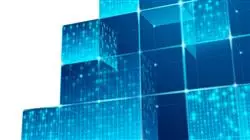University certificate
The world's largest faculty of information technology”
Introduction to the Program
You will become a great Communication Management, an expert in the most advanced and most applicable technologies of today and the future"

In a world where digital technology is growing by leaps and bounds, it is necessary to perform a detailed analysis of Blockchain technology: characteristics, elements, implementation models and algorithms, frameworks and platforms most commonly used, as well as the most common use cases in the business environment. To this end, this training addresses from the problem of securitization, transparency and monitoring of communications, to the implementation of blockchain technology, through its evolution towards solving the problems of communication between nodes, generation of unique elements and the processes of tokenization of information.
The Digital Twin, which has an infinite number of applications and radically changes the laboratory or test models, will also be explored. With the application of the implementation of a Digital Twin, the Students will be able to simulate and perform unlimited tests before taking their project into production and operation. In addition, during the operation phase, it will allow them to anticipate failures or anomalous behavior by implementing advanced predictive maintenance algorithms.
This program generates specialized knowledge so that the engineer is able to analyze, define and apply the best implementation strategy for this type of solutions. The Student Body will deepen the scope of application of each technology, understanding the competitive advantages they provide. Furthermore, graduates have the best 100% online study methodology, which eliminates the need to attend classes in person or be constrained by a predetermined schedule.
You are looking at a high-level program, aimed at Communication Management like you, who want to lead the digital transformation and evolution in the world"
The Postgraduate diploma in Blockchain and Digital Twins contains the most complete and up-to-date educational program on the market. Its most notable features are:
- Case studies presented by experts in Blockchain and Digital Twins
- The graphic, schematic, and practical contents with which they are created, provide and practical information on the disciplines that are essential for professional practice
- Practical exercises where the self-assessment process can be carried out to improve learning
- Its special emphasis on innovative methodologies
- Theoretical lessons, questions to the expert, debate forums on controversial topics, and individual reflection assignments
- Content that is accessible from any fixed or portable device with an Internet connection
The professional will develop Blockchain technology, where there is room for endless applications, such as traceability, or the safeguarding of testimonies, documentary evidence and interrogation, among others"
The program’s teaching staff includes professionals from the field who contribute their work experience to this educational program, as well as renowned specialists from leading societies and prestigious universities.
Its multimedia content, developed with the latest educational technology, will allow professionals to learn in a contextual and situated learning environment, i.e. a simulated environment that will provide immersive education, programmed to prepare for real situations.
The design of this program focuses on Problem-Based Learning, by means of which professionals must try to solve the different professional practice situations that are presented to them throughout the course. For this purpose, the students will be assisted by an innovative interactive video system created by renowned and experienced experts.
You will cover front-line technologies and disciplines, applied to real projects and use cases of direct application in the professional market"

You will delve in the Digital Twins, a field with increasing demand and for which there is a very high lack of qualified profiles"
Why study at TECH?
TECH is the world’s largest online university. With an impressive catalog of more than 14,000 university programs available in 11 languages, it is positioned as a leader in employability, with a 99% job placement rate. In addition, it relies on an enormous faculty of more than 6,000 professors of the highest international renown.

Study at the world's largest online university and guarantee your professional success. The future starts at TECH”
The world’s best online university according to FORBES
The prestigious Forbes magazine, specialized in business and finance, has highlighted TECH as “the world's best online university” This is what they have recently stated in an article in their digital edition in which they echo the success story of this institution, “thanks to the academic offer it provides, the selection of its teaching staff, and an innovative learning method aimed at educating the professionals of the future”
A revolutionary study method, a cutting-edge faculty and a practical focus: the key to TECH's success.
The most complete study plans on the university scene
TECH offers the most complete study plans on the university scene, with syllabuses that cover fundamental concepts and, at the same time, the main scientific advances in their specific scientific areas. In addition, these programs are continuously being updated to guarantee students the academic vanguard and the most in-demand professional skills. In this way, the university's qualifications provide its graduates with a significant advantage to propel their careers to success.
TECH offers the most comprehensive and intensive study plans on the current university scene.
A world-class teaching staff
TECH's teaching staff is made up of more than 6,000 professors with the highest international recognition. Professors, researchers and top executives of multinational companies, including Isaiah Covington, performance coach of the Boston Celtics; Magda Romanska, principal investigator at Harvard MetaLAB; Ignacio Wistumba, chairman of the department of translational molecular pathology at MD Anderson Cancer Center; and D.W. Pine, creative director of TIME magazine, among others.
Internationally renowned experts, specialized in different branches of Health, Technology, Communication and Business, form part of the TECH faculty.
A unique learning method
TECH is the first university to use Relearning in all its programs. It is the best online learning methodology, accredited with international teaching quality certifications, provided by prestigious educational agencies. In addition, this disruptive educational model is complemented with the “Case Method”, thereby setting up a unique online teaching strategy. Innovative teaching resources are also implemented, including detailed videos, infographics and interactive summaries.
TECH combines Relearning and the Case Method in all its university programs to guarantee excellent theoretical and practical learning, studying whenever and wherever you want.
The world's largest online university
TECH is the world’s largest online university. We are the largest educational institution, with the best and widest online educational catalog, one hundred percent online and covering the vast majority of areas of knowledge. We offer a large selection of our own degrees and accredited online undergraduate and postgraduate degrees. In total, more than 14,000 university degrees, in eleven different languages, make us the largest educational largest in the world.
TECH has the world's most extensive catalog of academic and official programs, available in more than 11 languages.
Google Premier Partner
The American technology giant has awarded TECH the Google Google Premier Partner badge. This award, which is only available to 3% of the world's companies, highlights the efficient, flexible and tailored experience that this university provides to students. The recognition as a Google Premier Partner not only accredits the maximum rigor, performance and investment in TECH's digital infrastructures, but also places this university as one of the world's leading technology companies.
Google has positioned TECH in the top 3% of the world's most important technology companies by awarding it its Google Premier Partner badge.
The official online university of the NBA
TECH is the official online university of the NBA. Thanks to our agreement with the biggest league in basketball, we offer our students exclusive university programs, as well as a wide variety of educational resources focused on the business of the league and other areas of the sports industry. Each program is made up of a uniquely designed syllabus and features exceptional guest hosts: professionals with a distinguished sports background who will offer their expertise on the most relevant topics.
TECH has been selected by the NBA, the world's top basketball league, as its official online university.
The top-rated university by its students
Students have positioned TECH as the world's top-rated university on the main review websites, with a highest rating of 4.9 out of 5, obtained from more than 1,000 reviews. These results consolidate TECH as the benchmark university institution at an international level, reflecting the excellence and positive impact of its educational model.” reflecting the excellence and positive impact of its educational model.”
TECH is the world’s top-rated university by its students.
Leaders in employability
TECH has managed to become the leading university in employability. 99% of its students obtain jobs in the academic field they have studied, within one year of completing any of the university's programs. A similar number achieve immediate career enhancement. All this thanks to a study methodology that bases its effectiveness on the acquisition of practical skills, which are absolutely necessary for professional development.
99% of TECH graduates find a job within a year of completing their studies.
Postgraduate Diploma in Blockchain and Digital Twins
In an increasingly digital world, it is essential to master Blockchain technology in detail, including its characteristics, elements, models and implementation algorithms. Therefore, with the Postgraduate Diploma in Blockchain and Digital Twins you will delve into the Security, transparency and traceability of communications. In fact, you will also examine the evolution of blockchain technology towards solving problems of Communication between nodes, the generation of unique elements and the processes of Tokenization of information.
Perform unlimited testing with your projects thanks to your mastery of Digital Twins
Likewise, with this Postgraduate Diploma in Blockchain and Digital Twins you will also explore the Digital Twin concept, which has multiple applications and changes lab or testing models. By implementing a Digital Twin, you will find yourself in a position to simulate and perform unlimited testing before taking your project into production and operation. Moreover, during the operation phase, it will allow you to anticipate failures or anomalous behavior by executing advanced predictive maintenance algorithms. Of course, this is a valuable upgrade opportunity that will make it easier for you to take the next step in your IT career, which you will do in a 100% online mode. What's more, TECH allows you to manage the academic resources according to your own needs, making it a highly compatable program.







